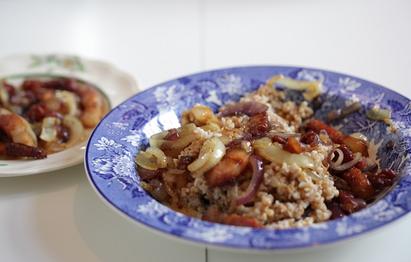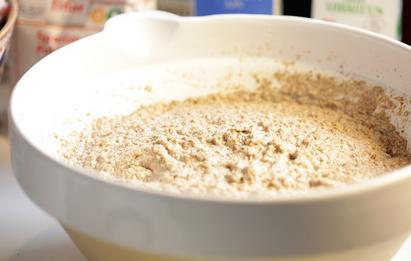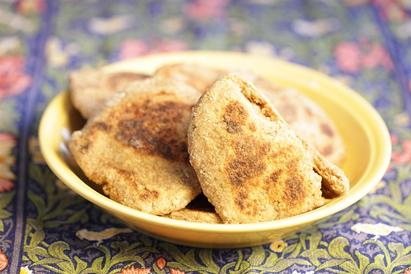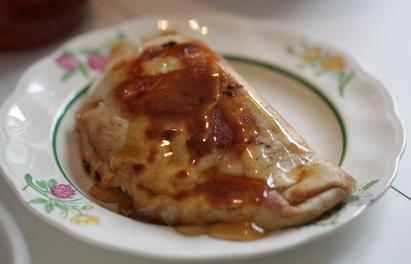Bread and porridge in the Viking Age




Rye bread is often regarded as being especially Danish. But what did everyday bread taste like in the Viking period? The most important cereals were rye and barley. In addition, oats, millet and wheat were cultivated. Apart from bread, cereals were also used to make porridge and beer.
Rye, in particular, was used for making sour dough bread – a coarse bread, quite similar to today’s Danish rye bread. At this time wheat was a rare cereal crop and a luxury product preserved for the rich.
Flat breads were also baked. These small breads were made of flour, eggs and water. Honey made the breads tastier. They were baked in a pan or grilled over the fire. It was not until the end of the Viking period that ovens were widely used in the household.
The Vikings had several options, when it came to making porridge. It could be made from barley, oats, buckwheat or millet. They mixed berries and apples into the porridge to add sweetness. Porridge was typically part of the daily food intake, especially that of the poor.
The agricultural revolution
During the Viking period the primitive plough, the ard, was replaced by the mouldboard plough. This was a big step for agriculture, as it resulted in a greater yield and less work for the farmers. In contrast to the ard, which was restricted to cutting one furrow in the soil, the mouldboard plough could also turn the soil in preparation for sowing.
